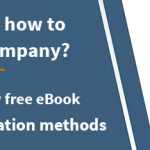The importance of conducting an effective integration process post-acquisition cannot be overstated. From ensuring that new company employees are comfortable within the workplace, to putting time into updating any internal company processes that need revising, the difference between a successful and failed merger can often be derived from the effort placed upon integration. The reality of the matter is that one of the greatest benefits of M&A is being able to incorporate your acquisition’s strengths into your own company’s processes, and in turn, you truly wouldn’t be doing your hard work justice if you failed to do so post transaction.
Practice What You Preach
One of the absolute fundamental facets of integration is training. In turn, it is crucial to approach this task with a great sense of practicality, and to not perceive it as a chore which simply requires a box to be ticked. Putting enough time into training any new employees, as well as older established employees, with all of the newly implemented processes and systems is essential to the future success of the merger. Resultantly, it is vital for the likes of top management and HR to implement a thoroughly thought out training process, which combines both group and individual tasks. In doing so, you are able to develop employees in a range of conditions and contexts, working with various issues from handling pressure situations to how to operate the company’s online portal. By applying such a comprehensive training program, it will go a long way in safeguarding the company’s continuity and progress in its newly merged and or expanded form.
Beyond the training phase, it is important that the principles, concepts and processes that have been taught are not neglected or forgotten about going forward. To ensure that all the time, money and effort placed upon the training does not go to waste, it is recommended that the company implements some solidified evaluation processes, whilst maintaining a high level of dialogue between HR, employees and top management regarding the new procedures. As a result, it becomes easier not only to track individual and department performances, but to also isolate the particular processes that are working well, which need improvement, and which need to be scrapped altogether. The fact is that not everything you try will work, and in turn, discovering that a certain practice doesn’t actually work for your company should be perceived as a positive thing. As such, you are now one step closer to ascertaining what is the right combination of processes and practices for your firm; categorically, understanding what doesn’t work for you can be just as valuable as understanding what does.
Patient Determination
In saying this, these things do take time and as has been alluded to previously in our article regarding the human aspect of M&A, it is important to maintain a decent level of patience. Without taking an absolute laissez-faire approach, it is important to remember that Rome wasn’t built in a day, just as your company post an acquisition won’t reach its ultimate heights instantaneously. It takes time for working relationships and processes to be developed and understood, for strategies to come to fruition and ultimately, for the newly merged company to reach its potential. With this in mind, it is important to not place too higher expectations on your company within the short term, after your acquisition. There is no problem with being bold and ambitious, but it is more about playing the long-game, in which you are not too discouraged if results don’t go exactly your way in the initial stages of the post-acquisition period.
Arguably the most important factor throughout this entire process is the upholding of a clear vision, which the entire firm has agreed upon and bought into. So long as your company has its sights set on a certain outcome, a collection of goals, or even a mentality that is able to unite the firm, then the company will solider on as a team; a collective that is determined to achieve success together. After all, it makes it so much easier for individuals and teams alike to achieve success when they know exactly what that success may look or feel like. Resultantly, a newly merged company’s vision for success and where it wants to be in the future should be the very foundation for what binds together each individual inside the firm. For nothing truly brings people together than a shared desire to achieve something big. Thus, from the moment a company signs off on an acquisition, their mind’s must turn to the all-important notion of integration. In fact, it has been suggested that “ideally, the acquiring company should begin planning the integration process even before the deal is announced.” In doing so, it becomes clear to top management as to how they can best go about implementing their new vision into the firm’s ethos as fast as possible.
















